-
 bitcoin
bitcoin $115139.818732 USD
-0.61% -
 ethereum
ethereum $4598.676579 USD
-1.26% -
 xrp
xrp $3.029978 USD
-2.08% -
 tether
tether $1.000434 USD
0.01% -
 solana
solana $240.784980 USD
-1.13% -
 bnb
bnb $925.044734 USD
-0.61% -
 usd-coin
usd-coin $0.999772 USD
0.01% -
 dogecoin
dogecoin $0.277157 USD
-2.21% -
 tron
tron $0.348716 USD
-0.26% -
 cardano
cardano $0.885611 USD
-3.31% -
 hyperliquid
hyperliquid $53.547629 USD
-2.46% -
 chainlink
chainlink $24.053828 USD
-2.67% -
 ethena-usde
ethena-usde $1.001251 USD
0.02% -
 sui
sui $3.671154 USD
-2.26% -
 avalanche
avalanche $29.401465 USD
-1.56%
How should the KDJ and RSI indicators be used together?
Combining KDJ and RSI improves trading accuracy by confirming momentum and reducing false signals in volatile crypto markets.
Sep 14, 2025 at 09:19 pm
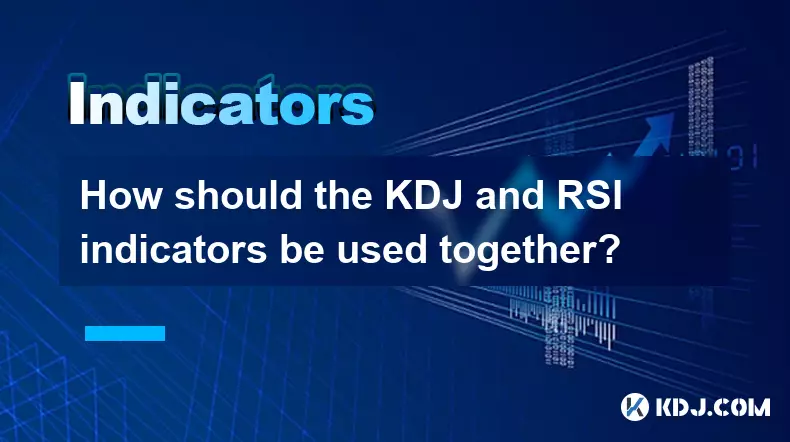
Understanding KDJ and RSI in Cryptocurrency Trading
1. The KDJ indicator, also known as the Stochastic Oscillator, measures the momentum of price movements by comparing a cryptocurrency’s closing price to its price range over a specific period. It consists of three lines: %K, %D, and %J. Traders use crossovers between these lines to identify potential entry and exit points.
2. The Relative Strength Index (RSI) evaluates the speed and change of price movements on a scale from 0 to 100. An asset is typically considered overbought when RSI exceeds 70 and oversold when it falls below 30. This helps traders anticipate reversals in volatile crypto markets.
3. When used together, KDJ and RSI complement each other by offering confirmation signals. For example, if the KDJ shows a bullish crossover and RSI moves above 30 from an oversold level, this strengthens the likelihood of a price rebound.
4. Combining both indicators reduces false signals common in highly speculative environments like cryptocurrency trading. While KDJ detects short-term momentum shifts, RSI provides insight into broader market strength or weakness.
5. Traders should avoid relying solely on either indicator. Instead, they should observe alignment between KDJ patterns and RSI readings to increase confidence in their trading decisions.
Identifying Overbought and Oversold Conditions with Dual Confirmation
1. In fast-moving crypto markets, overbought conditions occur frequently but don’t always lead to immediate corrections. When RSI crosses above 70 and the KDJ %K line rises above %D in overbought territory, it may signal sustained upward momentum rather than reversal.
2. Conversely, when RSI drops below 30 and the KDJ %K line crosses below %D in oversold zones, it often indicates continued downward pressure. However, if both indicators begin rising from extreme lows simultaneously, this can suggest accumulation is underway.
3. A powerful buy signal emerges when RSI exits oversold levels (moves above 30) while KDJ shows a golden cross—%K crossing above %D below 20. This dual confirmation increases reliability in identifying trend reversals.
4. Similarly, a strong sell signal occurs when RSI falls back under 70 after peaking above it, coinciding with a death cross in KDJ (%K crossing below %D above 80). These aligned signals help filter out noise during sideways market phases.
5. During periods of high volatility, such as major news events or exchange outages, both indicators may give conflicting readings. In such cases, waiting for convergence between KDJ and RSI improves timing accuracy.
Practical Application in Crypto Chart Analysis
1. On a 4-hour BTC/USDT chart, a trader notices that RSI has been below 30 for several candles while KDJ values are near 10. Once %K crosses above %D and RSI climbs past 30, it validates a potential long position entry.
2. Ethereum price consolidates within a narrow range, causing KDJ to oscillate rapidly. Meanwhile, RSI remains flat around 50, indicating indecision. Only when RSI breaks out of this neutral zone does the KDJ movement gain significance.
3. Altcoins often experience exaggerated swings. If Dogecoin's RSI spikes above 80 and KDJ %J reaches 100, it reflects extreme speculation. A subsequent drop in both indicators below their respective thresholds warns of a sharp pullback.
4. Divergence analysis enhances effectiveness. If Bitcoin makes a new high but RSI fails to surpass its prior peak and KDJ shows lower highs, bearish divergence forms—hinting at weakening momentum despite price gains.
5. Adjusting timeframes alters sensitivity. Using daily charts, longer-term trends become clearer, whereas 15-minute charts with both indicators may produce excessive signals requiring stricter filtering rules.
Frequently Asked Questions
What settings are optimal for KDJ and RSI in cryptocurrency trading?Common settings include 14 periods for RSI and 9,3,3 for KDJ (%K period, %D smoothing, %J calculation). These can be adjusted based on volatility; shorter periods increase sensitivity, suitable for scalping.
Can KDJ and RSI be used in ranging versus trending markets?Yes. In ranging markets, overbought/oversold levels work well. In strong trends, waiting for pullbacks where both indicators align improves trade quality. Trend-following strategies benefit more from RSI midline crossovers combined with KDJ direction.
Do these indicators work across all cryptocurrencies?They apply broadly, but low-liquidity altcoins may generate erratic signals due to manipulation or thin order books. Major coins like BTC and ETH tend to produce more reliable patterns because of deeper markets.
How do volume spikes affect KDJ and RSI interpretation?High volume accompanying a breakout confirmed by both indicators adds credibility. For instance, if RSI exits oversold and KDJ generates a golden cross on unusually high volume, the bullish signal gains strength.
Disclaimer:info@kdj.com
The information provided is not trading advice. kdj.com does not assume any responsibility for any investments made based on the information provided in this article. Cryptocurrencies are highly volatile and it is highly recommended that you invest with caution after thorough research!
If you believe that the content used on this website infringes your copyright, please contact us immediately (info@kdj.com) and we will delete it promptly.
- Dogecoin in 2025: Poised for a Profitable Month?
- 2025-09-15 08:50:01
- Altcoins on Fire: Solana, SUI, DOT, and the Rise of Layer Brett
- 2025-09-15 08:50:01
- Polkadot's App-Building Revolution: JAM, DevContainers, and the DOT Token's Future
- 2025-09-15 08:25:14
- Dogecoin, Solana, Crypto Assets: Riding the Wave of Momentum and Madness
- 2025-09-15 08:50:01
- XRP's Market Value Skyrockets: Price Surge on the Horizon?
- 2025-09-15 09:00:01
- Bitcoin Cash, Ethereum Classic, and Presales: What's the Buzz in September 2025?
- 2025-09-15 09:00:01
Related knowledge
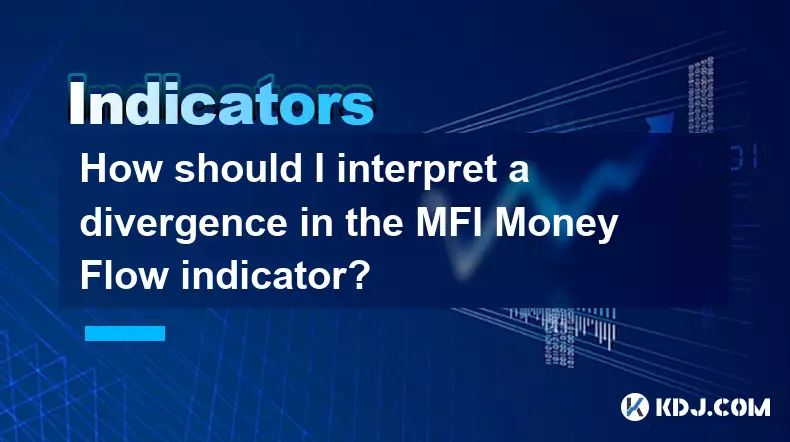
How should I interpret a divergence in the MFI Money Flow indicator?
Sep 13,2025 at 08:36pm
Understanding MFI Divergence in Cryptocurrency Trading1. The Money Flow Index (MFI) is a technical oscillator that combines price and volume to assess...
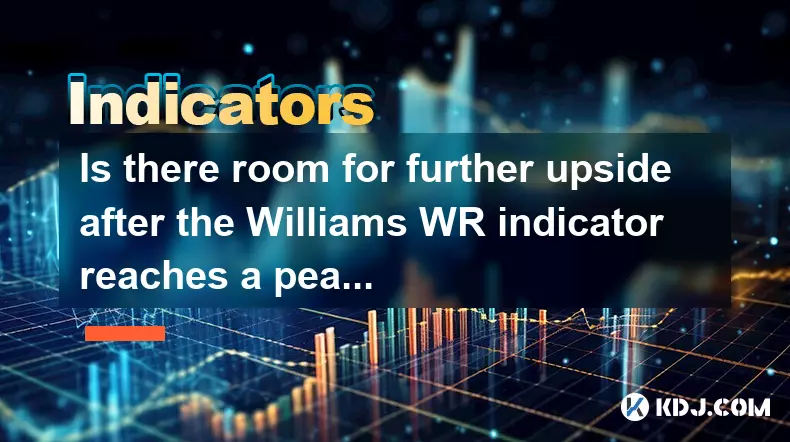
Is there room for further upside after the Williams WR indicator reaches a peak?
Sep 11,2025 at 07:36pm
Understanding the Williams %R in Crypto Markets1. The Williams %R is a momentum oscillator developed by Larry Williams to identify overbought and over...

What is the success rate of a TRIX golden cross?
Sep 11,2025 at 02:18am
Understanding the TRIX Indicator in Cryptocurrency Trading1. The TRIX (Triple Exponential Average) indicator is a momentum oscillator designed to filt...
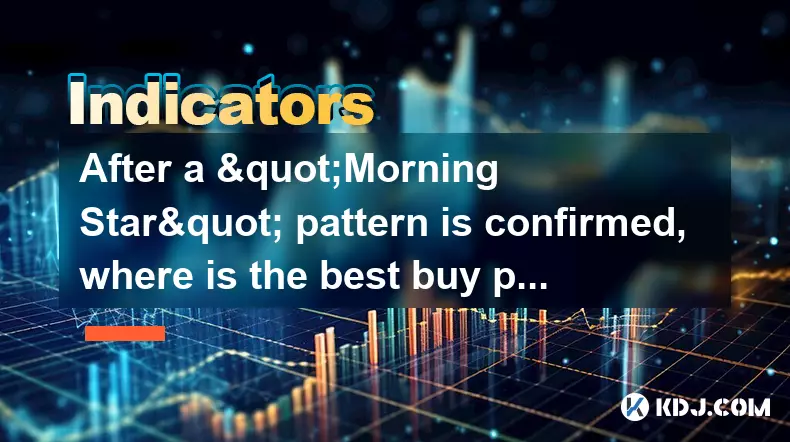
After a "Morning Star" pattern is confirmed, where is the best buy point?
Sep 10,2025 at 06:00pm
Understanding the Morning Star Pattern1. The Morning Star is a bullish reversal candlestick pattern that typically forms at the end of a downtrend. It...
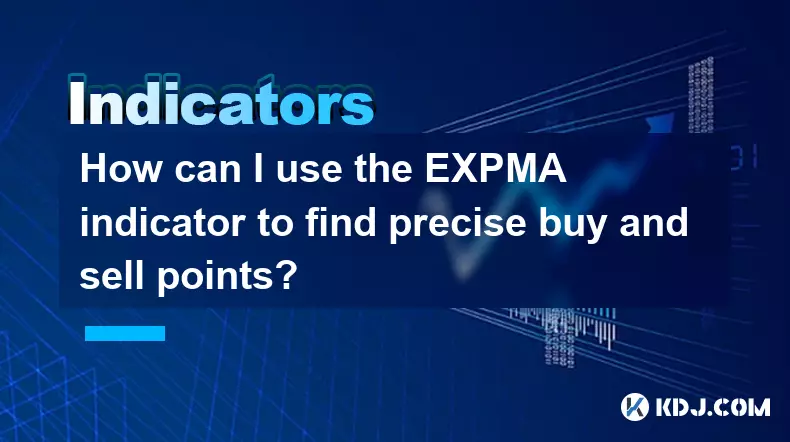
How can I use the EXPMA indicator to find precise buy and sell points?
Sep 15,2025 at 03:18am
Understanding the EXPMA Indicator in Cryptocurrency Trading1. The Exponential Moving Average (EXPMA) is a type of moving average that places greater w...

Is a golden cross between the 5-day and 10-day lines a short-term buy signal?
Sep 14,2025 at 01:36pm
Understanding the Golden Cross in Cryptocurrency Trading1. The golden cross is a technical indicator that occurs when a short-term moving average cros...

How should I interpret a divergence in the MFI Money Flow indicator?
Sep 13,2025 at 08:36pm
Understanding MFI Divergence in Cryptocurrency Trading1. The Money Flow Index (MFI) is a technical oscillator that combines price and volume to assess...

Is there room for further upside after the Williams WR indicator reaches a peak?
Sep 11,2025 at 07:36pm
Understanding the Williams %R in Crypto Markets1. The Williams %R is a momentum oscillator developed by Larry Williams to identify overbought and over...

What is the success rate of a TRIX golden cross?
Sep 11,2025 at 02:18am
Understanding the TRIX Indicator in Cryptocurrency Trading1. The TRIX (Triple Exponential Average) indicator is a momentum oscillator designed to filt...

After a "Morning Star" pattern is confirmed, where is the best buy point?
Sep 10,2025 at 06:00pm
Understanding the Morning Star Pattern1. The Morning Star is a bullish reversal candlestick pattern that typically forms at the end of a downtrend. It...

How can I use the EXPMA indicator to find precise buy and sell points?
Sep 15,2025 at 03:18am
Understanding the EXPMA Indicator in Cryptocurrency Trading1. The Exponential Moving Average (EXPMA) is a type of moving average that places greater w...

Is a golden cross between the 5-day and 10-day lines a short-term buy signal?
Sep 14,2025 at 01:36pm
Understanding the Golden Cross in Cryptocurrency Trading1. The golden cross is a technical indicator that occurs when a short-term moving average cros...
See all articles





















![Trump WLFI token private key collision project, can use multiple windows and claim to be a single window income of four digits [Protocol script + usage tutorial] #Make money at home#Make money at side business Trump WLFI token private key collision project, can use multiple windows and claim to be a single window income of four digits [Protocol script + usage tutorial] #Make money at home#Make money at side business](/uploads/2025/09/15/cryptocurrencies-news/videos/trump-wlfi-token-private-key-collision-project-multiple-windows-claim-single-window-income-digits-protocol-script-usage-tutorial-money-money-business/68c76555f1557_image_500_375.webp)




















































